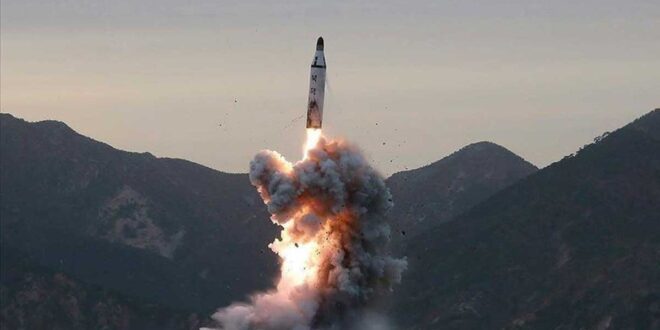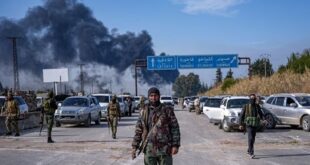Gabriela Bernal
A week full of missile tests; this is the current environment on the Korean Peninsula. On Wednesday, North Korea fired two rounds of ballistic missiles into the East Sea while South Korea tested its first submarine-launched ballistic missile (SLBM) just a few hours later. Wednesday’s tests follow a week of rising tensions on the Korean Peninsula, the consequences of which can be felt beyond the two Koreas.
North Korea ramps up tensions
According to North Korean state-run media reports, the reclusive state carried out a series of successful tests of a new long-range cruise missile over the weekend while referring to the missiles as a “strategic weapon of great significance”. Calling the weapon ‘strategic’ may imply a nuclear-capable system. Although North Korea is banned from using ballistic technologies due to U.N. Security Council resolutions, these same rules do not apply to cruise missiles.
Despite the tests, Washington maintained its position to resume dialogue with the North and “to work cooperatively with the DPRK to address areas of humanitarian concerns regardless of progress on denuclearization,” US Special Representative for North Korea Sung Kim said on Tuesday. Still, the US Indo-Pacific Command did acknowledge the cruise missile launches and said the tests highlight the “DPRK’s continuing focus on developing its military program and the threats that poses to its neighbors and the international community.”
China reacted to the test by calling for restraint by all relevant parties and for a ‘dual track’ approach to be followed involving “phased and synchronized actions to continuously advance the political settlement of the Korean Peninsula issue.”
North Korea then upped tensions further by conducting yet another missile launch on Wednesday. This test marked the first time the DPRK launched a missile off a train-mounted ballistic missile delivery system, which they referred to as the “Railway Mobile Missile Regiment”. According to Japan’s Defense Minister Nobuo Kishi, the missiles were believed to have landed in Japan’s exclusive economic zone. The location of the landings don’t seem to be a coincidence as earlier that day North Korean state media had criticized Japan’s newly unveiled defense budget, referring to the country as a “war criminal state”.
Japanese Prime Minister Yoshihide Suga strongly condemned the latest tests, calling North Korea’s behavior “outrageous” and a “threat” to “the peace and security of our country and the region”. The US State Department also called the tests “a violation of multiple UN Security Council resolutions” while emphasizing the Biden administration’s commitment to trilateral diplomacy and cooperation with Japan and South Korea.
What’s more, North Korea appears to have resumed activities at its nuclear reactor at Yongbyon, according to a report published by the International Atomic Energy Agency last month. The report stated that “The DPRK’s nuclear activities continue to be a cause for serious concern” while adding that “The continuation of the DPRK’s nuclear programme is a clear violation of relevant UN Security Council resolutions and is deeply regrettable.”
In July, North Korea warned of a “major security crisis” in protest against the combined summertime military exercise between South Korea and the United States. This increase in rapid missile testing seems to be the result of North Korea’s dissatisfaction with both Seoul and Washington’s actions over the last few months.
South Korea joins in on the missile testing
Although the international community is used to hearing about North Korean missile tests over the years, what is much less common is to hear about a missile test conducted by the South. Hours after the North fired its missiles, South Korea tested its first submarine-launched ballistic missile (SLBM).
North Korea’s Kim Yo Jong—the sister of leader Kim Jong Un— was quick to respond to the tests the same day, warning of the “complete destruction of inter-Korean ties” and criticized Seoul’s “illogical, antiquated and foolish attitude”, according to North Korean state media.
Through the test, South Korea became the first country without nuclear weapons to launch an SLBM. Besides the SLBM, South Korea’s presidential office said in a statementthat the ROK military had also developed other new missiles, including a supersonic cruise missile to be deployed in the near future, and a new ballistic missile that has “overwhelming counterattack capability” by firing a larger warhead. Indeed, South Korea’s arms industry has grown exponentially over the last two deacades and continuous to expand rapidly. According to he SIPRI arms transfer database, South Korea rose from the 31st ranked arms exporting country in 2000 to number six in 2020.
Besides South Korea, Japan is also beefing up its military capabilities. Last month, Japan’s Defense Ministry sought a record $50 billion annual budget that would entail the largest percentage jump in spending in eight years. China was quick to criticize the move, accusing Japan of “trying to find excuses to justify their decision to increase military spending,” On the other hand, Japan blames China for “unilaterally changing the regional status quo,” affecting “the security of the Taiwan Straits, but also Japan’s security.”
The missile tests conducted by both Koreas this week further exacerbates the security situation in the region, negatively impacting far beyond the peninsula alone. The recent developments also don’t bode well for improving inter-Korean relations or US-DPRK ties. Diplomatic negotiations between the US and North Korea have been stalemated ever since the 2019 Hanoi Summit fell apart. So far, Biden has only verbally expressed interest in resuming talks, but is unlikely to do so unless North Korea makes concrete commitments to dismantle its nuclear weapons program.
Inter-Korean relations are also unlikely to improve in the near future, given the time constraints. South Korea’s President Moon has roughly six months left in office, and it is unlikely significant diplomatic progress can be made in this timeframe.
 Geostrategic Media Political Commentary, Analysis, Security, Defense
Geostrategic Media Political Commentary, Analysis, Security, Defense





